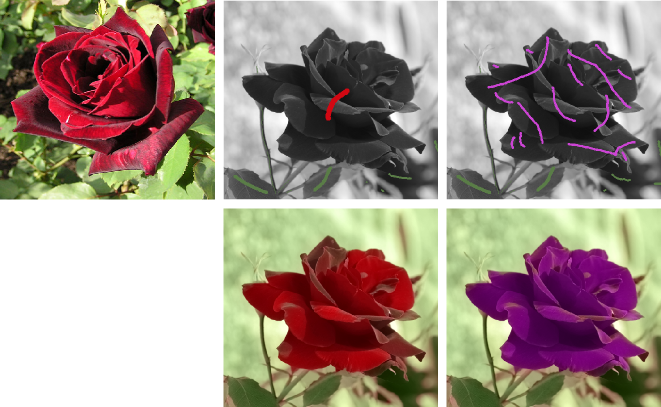Colorization is an important issue for example for the restoration of old documents, but also for the entertainment industry. The methods fall into two categories, manual methods and example-based methods for which the user provides a color image which serves as a source of information. The comparison of textures used to extract color. Regularization is then required, that is carried out in our case by minimizing a non-convex function. To propose a reasonable model for colorization and an efficient algorithm to minimize the proposed functional constituted the bulk of the beginning of the thesis.
However, methods-based example exhibited difficulty in finding a relevant source image. It is difficult to find a relevant source image for a given colorization, and the method fails frequently, just for example, when a color is not present in the source image, or when two smooth portions or similar textures expressed a different color. To avoid these issues, we proposed a method called collaborative colorization, based on an interactive method in which the user supervises the result. It has the ability to integrate color points in the result where the result appears unsatisfactory. This new information is integrated into the process by exploiting the non-convexity of the model.
